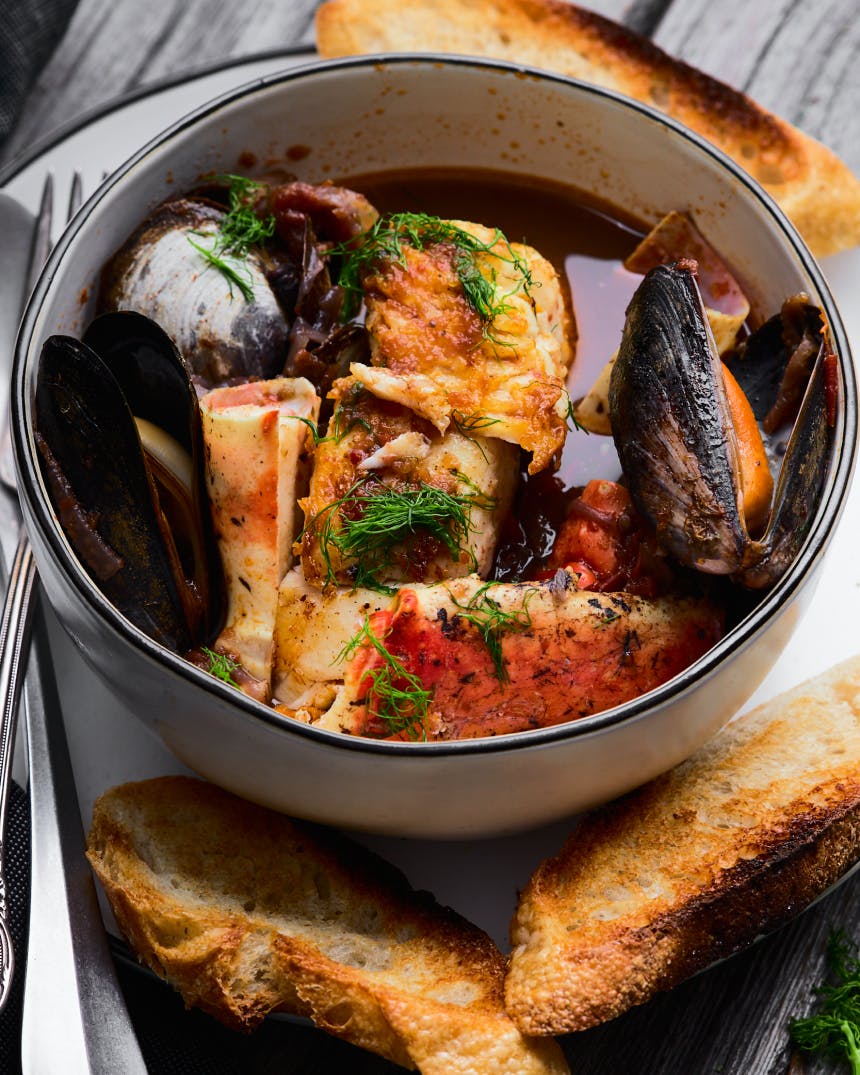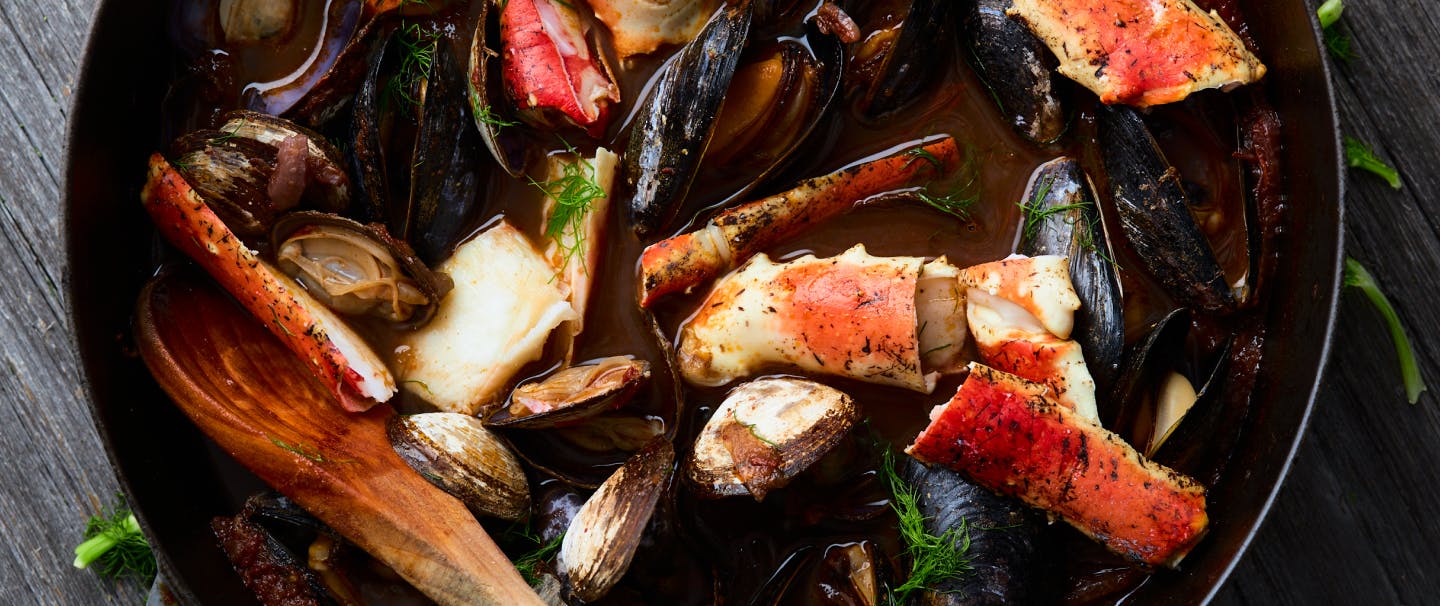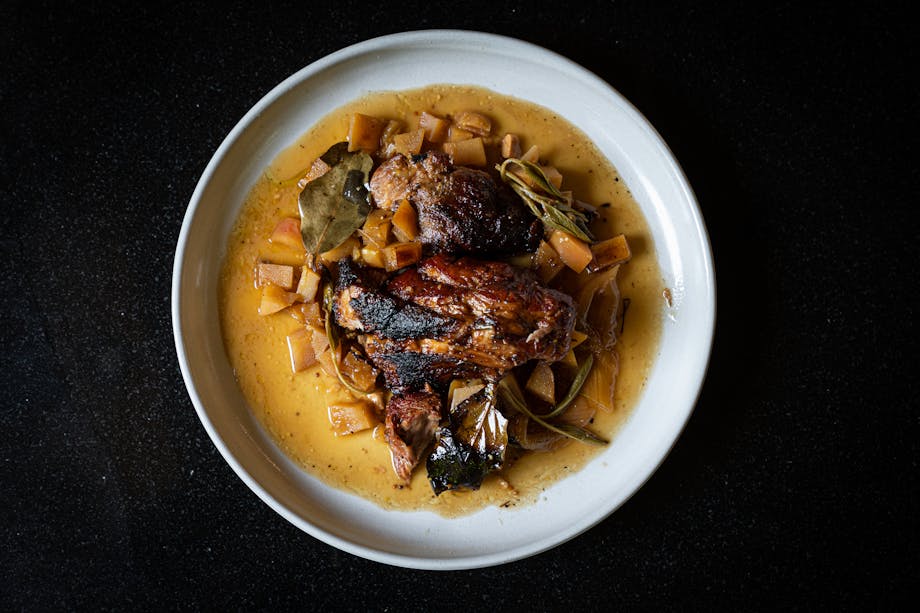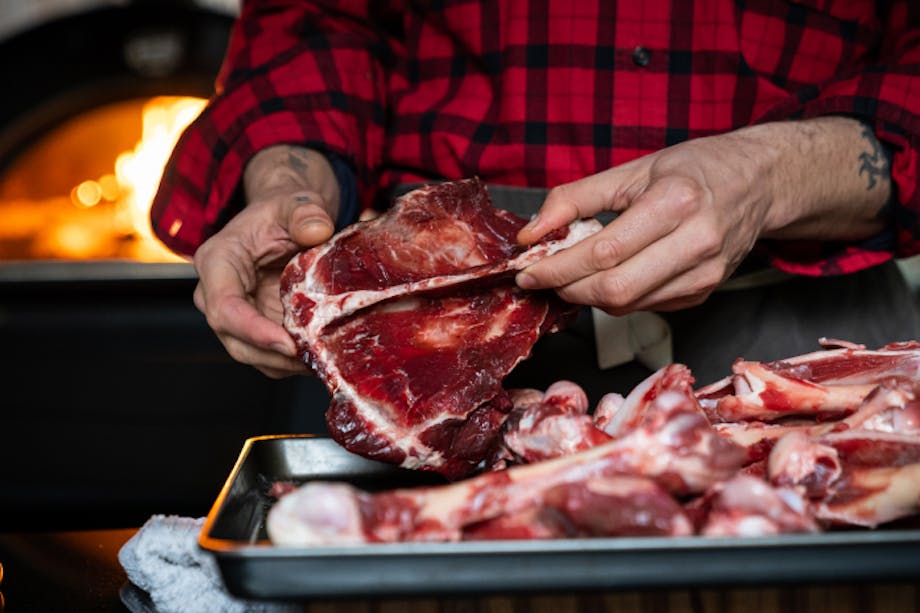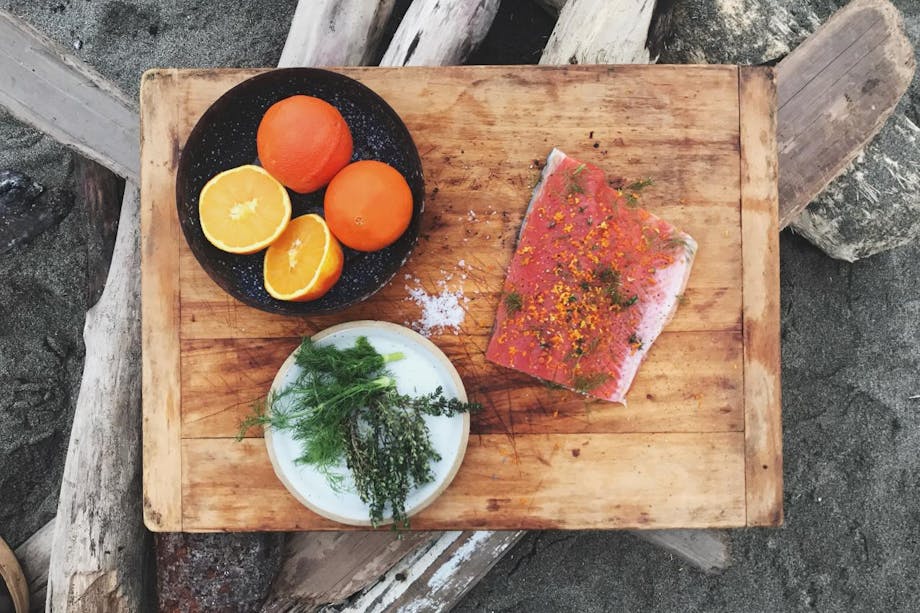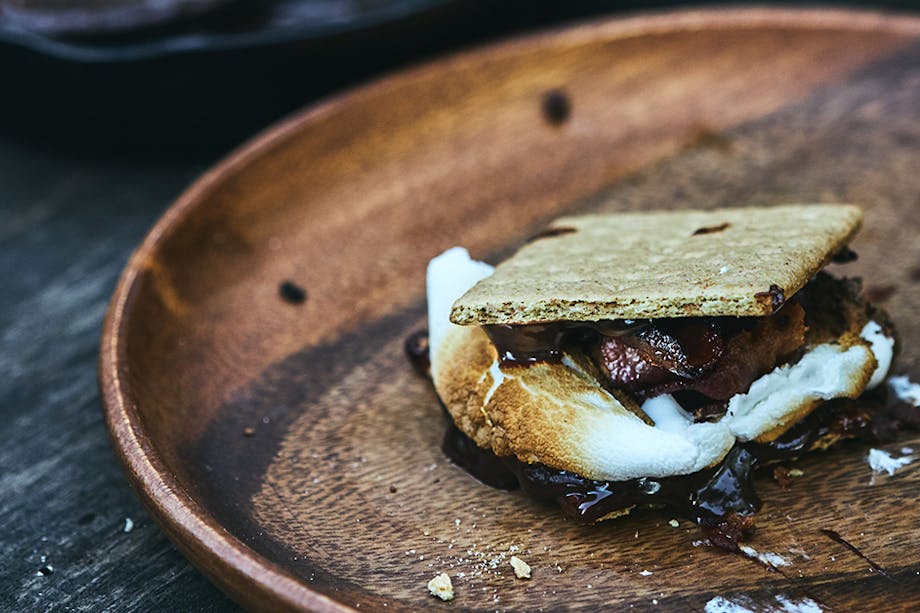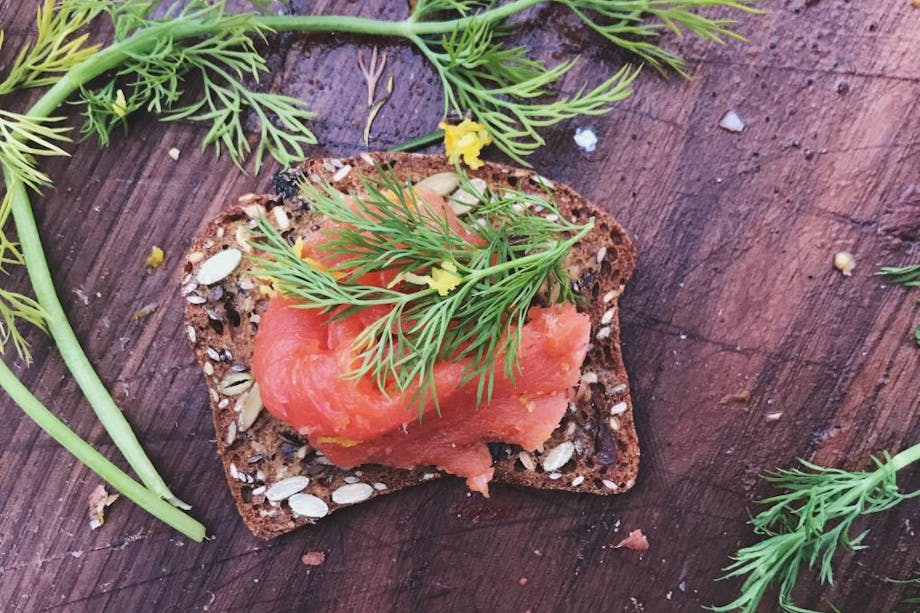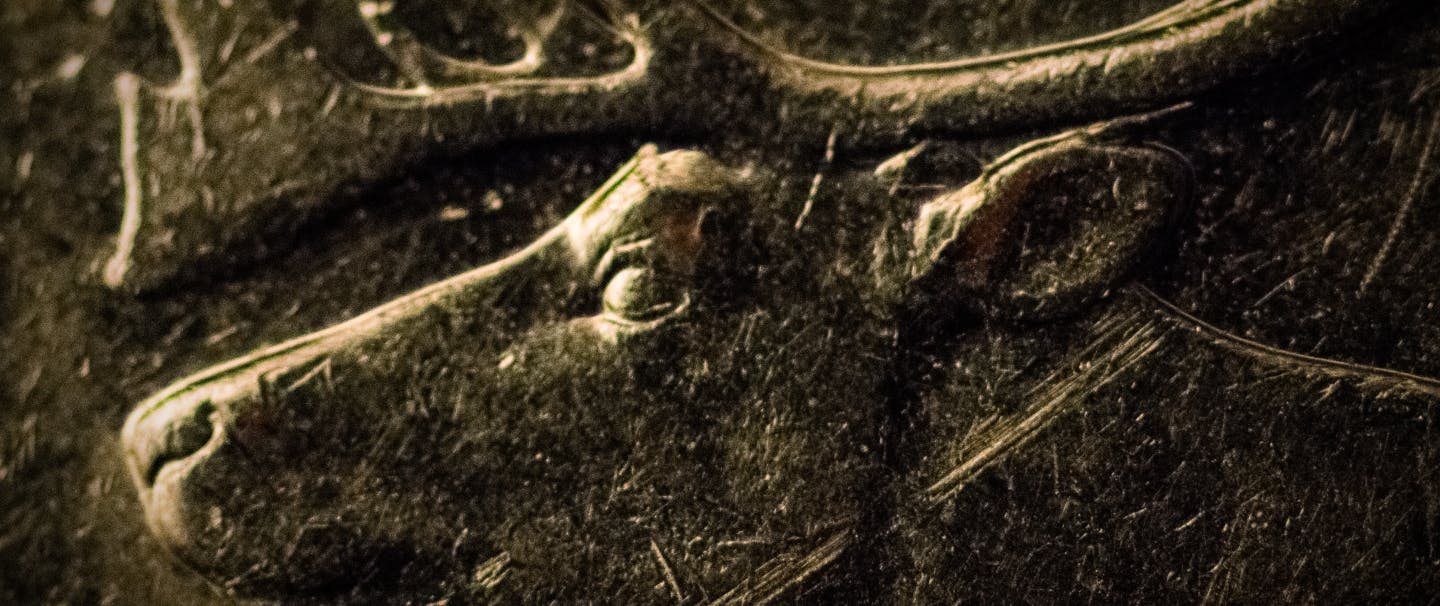Cacciucco is an Italian fish stew originating from the Tuscany region. Cioppino is the Italian–American variation. The two are very similar, and one thing they have in common is locally sourced seafood.
“This version of cacciucco uses seafood sourced from the Pacific Northwest instead of from the Mediterranean, as would be typical in Italy. The seafood used in this dish was caught along the coast from Seattle to Alaska. When I think of Filson I think of heartiness, and this dish is definitely hearty and rich and tastes of the sea. On a cold, wet, or snowy day, this stew will hit the spot. This is Filson’s take on an Italian classic.” — Rossano Russo

INGREDIENTS
Seafood
2 Pacific halibut fillets, 1.5” thick
1.5 lb savory clams
1.5 lb mussels
2 split king snow crab legs, cut into 3” pieces (precooked and frozen)
Tomato Broth
Extra virgin olive oil
1 large onion, sliced
½ fennel bulb, sliced thin (reserve the fronds for garnish)
2 celery stalks, sliced thin
Salt
2 cloves garlic, sliced thin
Pinch of chilli flakes
1 cup red wine
4 cups of fish stock
1 (16-ounce) can of Italian plum tomatoes, crushed or pureed
2 bay leaves
Fish Stock
2.5–3 lb fresh halibut trim, rinsed in cold water
3 tablespoons of olive oil
2 onions, roughly chopped
2 stalks celery, roughly chopped
3 whole garlic cloves
1 bouquet garni (bouquet of herbs): bundle
together with kitchen string a few sprigs of fresh
thyme and a generous handful of fresh parsley,
including stems
2 bay leaves
1 teaspoon whole peppercorn
Cold water
RECIPE
Fish Stock
This recipe calls for a fish stock made from scratch, but if you are pressed for time you can use a ready-made fish stock from your local fishmonger. However, if you have the time to make your own, it’s well worth doing, and will provide enough stock for leftovers. Freeze it and store for future use.
1. In a large stockpot, gently sauté the onions, celery, and garlic in oil over medium heat until the vegetables soften slightly, without browning. Add the fish bones and cook gently for a few more minutes, until the meat on the fish bones just starts to turn opaque. Add the bouquet garni, bay leaves, peppercorns, and enough cold water to just cover the ingredients.
2. Bring the stock to a gentle simmer. It should not boil. Skim any foamy grit that comes to the surface. After 45 minutes, remove the fish bones and strain the stock. Add the stock back to the pot and continue to simmer.
3. Reduce the stock by half. This will intensify it. Depending on the size of your stockpot, you should be left with eight cups. Add salt to taste at the end, before using.
Note: This stock can be transferred to plastic freezer bags and kept frozen for up to four months.

Cacciucco
1. Heat a large saucepan, lightly coated with olive oil, over medium heat. Add the onions, fennel, celery, and a large pinch of salt. Cook the vegetables until soft and aromatic; about 8–10 minutes. Add the garlic and crushed chilli flakes and cook for another 3–4 minutes. Stir in the wine and reduce by half. Season with salt. It’s important to season throughout this procedure.
2. Add 2 quarts (4 cups) of fish stock. Stir in the pureed tomatoes and the bay leaves. Season with salt and cook for 20–30 minutes. The final broth should be a very rich and flavorful soup. Taste. Add salt if needed.
3. Take a straight-sided deep pan that has a lid (or a Dutch oven), large enough to hold the mussels and clams. Place it over medium heat. Take 4–5 cups of tomato broth, bring to a hard simmer, and place the lid on. Turn the heat down slightly, to keep it warm. (Freeze any leftover tomato broth for future use.)
4. Preheat oven to 400°F. Heat a non-stick pan, lightly coated with olive oil, over high heat. Season the halibut with salt and pepper, add it to the pan, and sear the tops and bottoms of the filets. Be gentle. Halibut is a delicate fish, and you don’t want the filets to fall apart.
5. Once the filets are browned, place the pan in the preheated oven and finish cooking them. Depending on their thickness, and how long you spent searing them, 5 min should do. You want the internal cooked temperature to be 130–135 °F. Don’t be shy about using a thermometer; it will guarantee a perfectly cooked halibut filet.
6. While the halibut is finishing off in the oven, turn up the heat on the tomato broth. Bring to a hard simmer and throw in your mussels. Mix well, place the lid on, and let it steam for a minute. Remove the lid, throw in the savory clams and the split king snow crab pieces, and mix well. Place the lid on again and allow to steam until all the shellfish have opened. Remove from the heat. Discard any shellfish that haven’t opened.
7. Take two bowls and evenly distribute the mussels, clams, and crab pieces into each. Ladle tomato broth into each bowl. Place a halibut filet on top of each, and spoon over some more broth.
8. Garish with fennel frond and serve with crusty bread!
